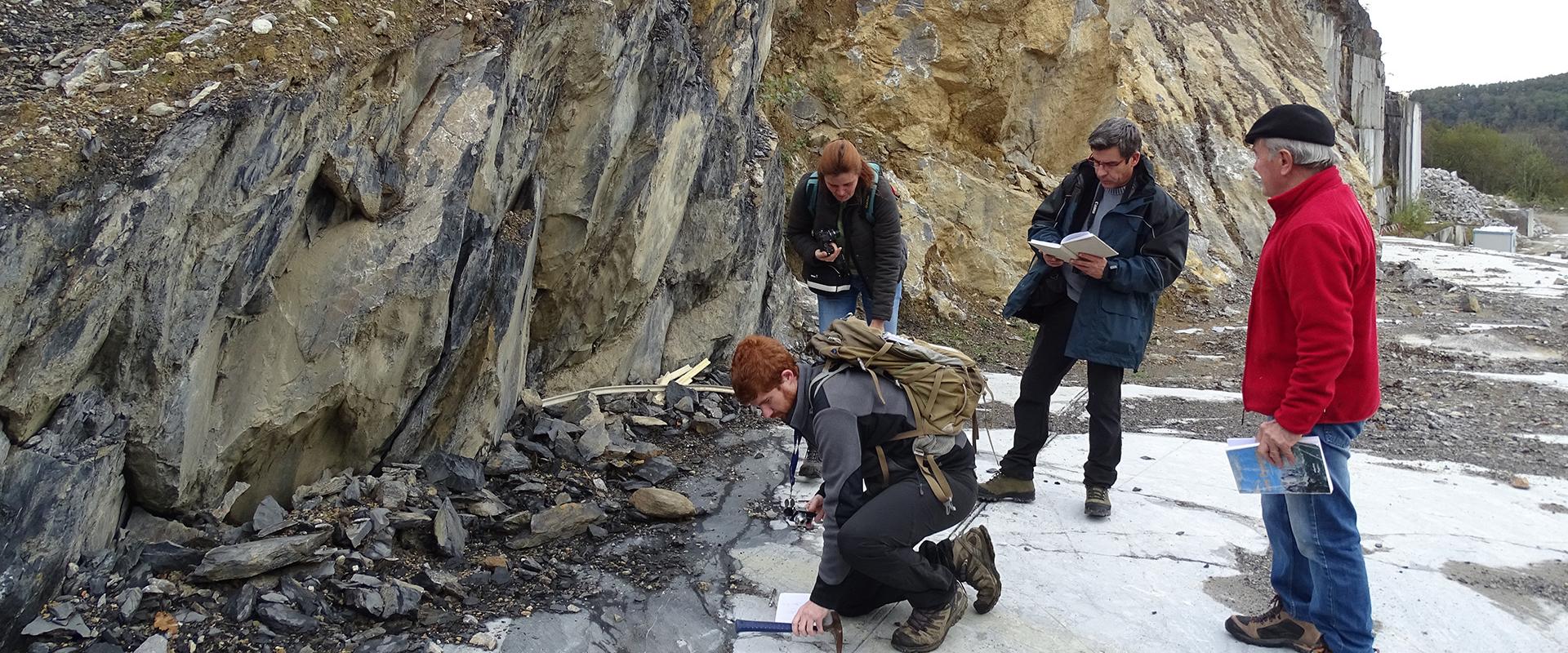The geology of the Tour de France – Stage 1 – When the sea rises
Transcription
Today we are mainly on old rocks shown as brown and red on the map. To cross, the peloton goes through the Passage Du Gois, a strip of land that emerges only at low tide linking Noirmoutier to the continent. This is our time. But 18,000 years ago, the coast was not where it is now and the sea was 80 km further west. In Europe, the Ice Age reigned and ice caps covered the continents. The region belonged to the mammoths, as proven by the cave paintings in Lascaux, not so far away, that date back to this era. The ice caps transformed the landscape and lowered the sea level by 120m. You could go to London on foot. Since then the ice has melted and the sea isolates Noirmoutier at high tide after the riders depart.
The geology of the Tour de France – Stage 2 – The eclogite rocks of Les Essarts
Transcription
The teams race against the clock and tackle the green strips indicating exceptional rocks. 23 km and no relief this time, but the riders wind through one of the biggest eclogite deposits in the world. An incredibly spectacular rock composed of red garnets in a bed of green minerals creates a stunning effect. This rock is a treasure. Mined 40 kilometres away, in Saint-Philibert-de-Bouaine, in the Gerbaudière quarry. The history of eclogites goes back a long way. They formed 440 million years ago, at a depth of 50 km, before the tectonic movements forced them upwards to lie just below the wheels of the riders in this team race against the clock.
Geology of the Tour de France – Stage 3 – "Sillon de Bretagne" escarpment: the scar
Transcription
The long black line on the map, is the "sillon" of Brittany that the Tour will cross today. A large fault that ends at the Pointe Du Raz. At Pontchâteau, the Tour winds through Brittany. This is where we changed continents, 400 million years ago. Armorica, a micro-continent to which Brittany belonged, was situated in the southern hemisphere, separated from Gondwana, a huge continent. Gondwana extended towards the North before the collision with Brittany, 310 million years ago. The huge impact created very high mountains that have disappeared today. Now, in Brittany, the cliffs along the sillon don't exceed 100 metres in height, just a bump at 35 kilometres from the finish at Pontchâteau, before the domain of Armorica.








The first stage of the 2011 Tour took the riders to the southern edge of the Armorican Massif. On the way, the peloton had to cross the Gois Passage, a strip of land that only emerges at low tide and which links Noirmoutier to the mainland. However, this was not always the case. 18,000 years ago, the sea was nearly 80 kilometres west of today's coast. At that time, Europe was in a glacial period and vast ice caps covered the northern part of the continent.